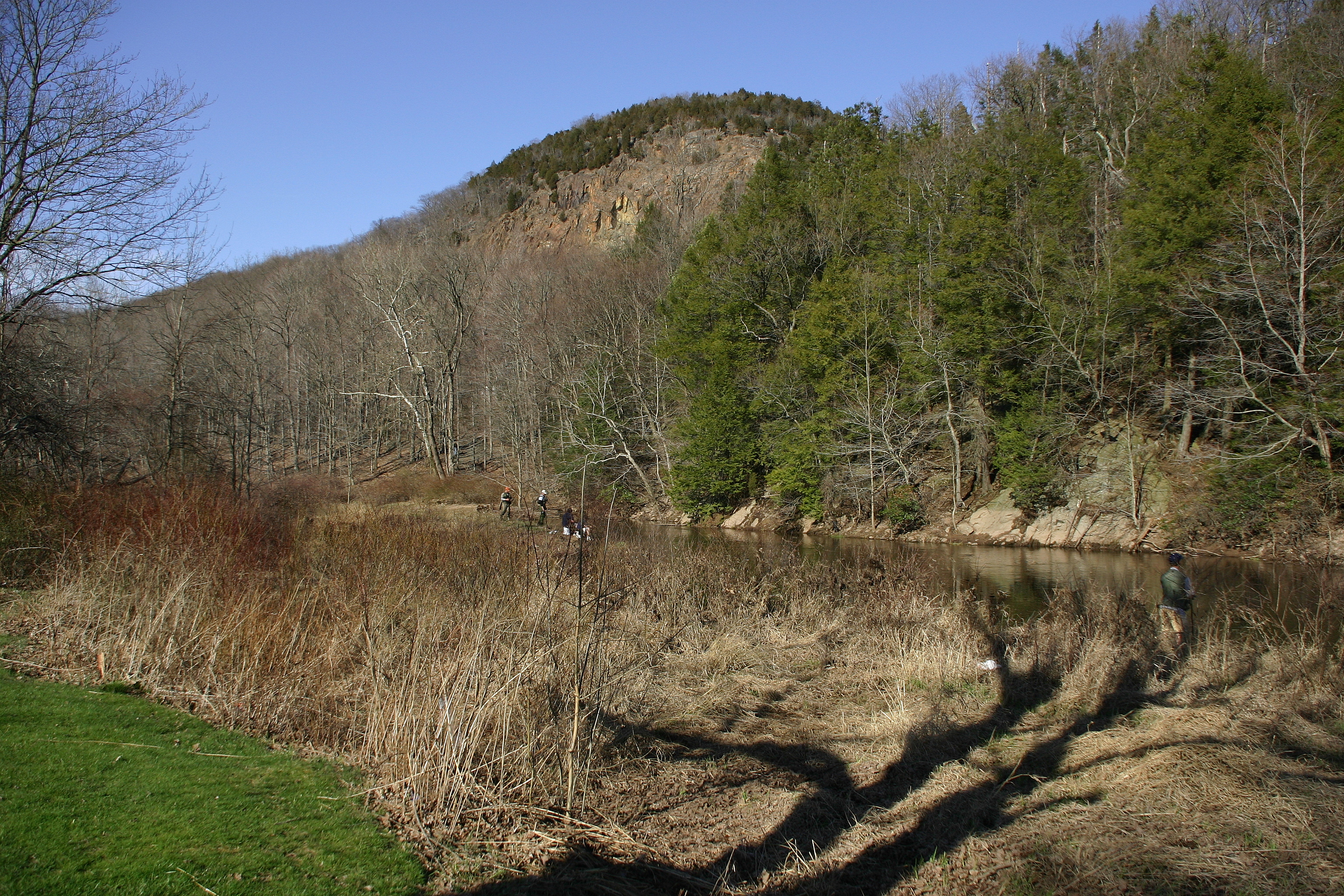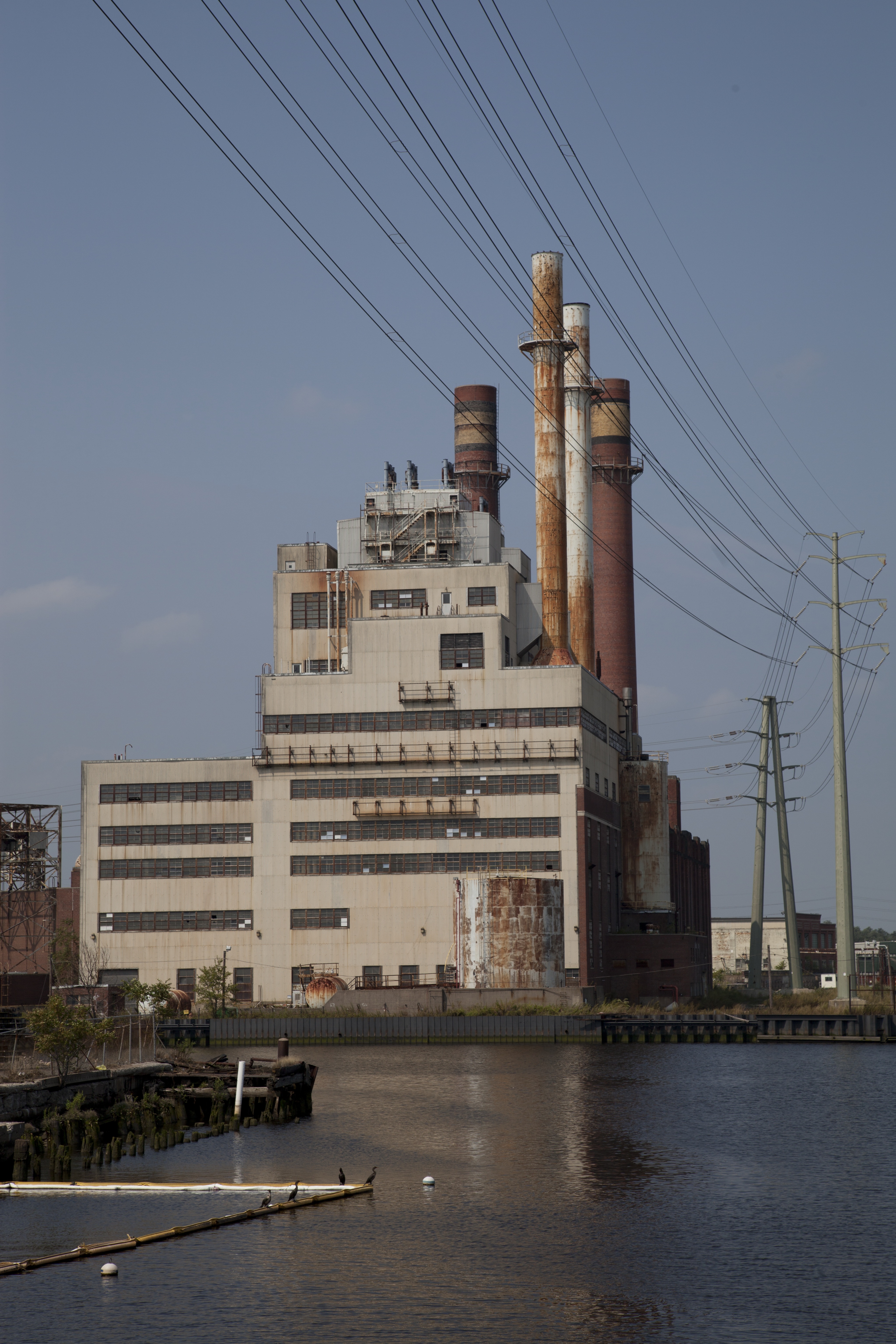|
Mill River (Connecticut)
The Mill River is a river in New Haven County, Connecticut. History A mill for grinding corn was built on a Quinnipiack ford near East Rock in 1642. By 1780 there were eight mills. In time the river provided power for Eli Whitney's gun factory, now the Eli Whitney Museum. It joins the Quinnipiac River at the mouth of New Haven Harbor which opens out into Long Island Sound. Watershed and course The river starts in the town of Cheshire, flows through Hamden and New Haven, and discharges into New Haven Harbor on Long Island Sound. The river's length is .U.S. Geological Survey. National Hydrography Dataset high-resolution flowline dataThe National Map, accessed April 1, 2011 The river is dammed in southern Hamden to form Lake Whitney (Connecticut), Lake Whitney, which is operated as a reservoir by the South Central Connecticut Regional Water Authority. Mill River passes through Sleeping Giant State Park in northern Hamden and East Rock Park below Lake Whitney in Ha ... [...More Info...] [...Related Items...] OR: [Wikipedia] [Google] [Baidu] |
Mill River (Fairfield, Connecticut)
The Mill River is a river in the town of Fairfield, Connecticut, Fairfield, Connecticut. It flows into Long Island Sound at Southport (Fairfield), Southport harbor.U.S. Geological SurveyHydrologic Data for Mill River Basin 01208925 Mill River near Fairfield, CT Dams on the Mill River form the Easton Reservoir, Easton, Hemlock Reservoir, Hemlock, and Samp Mortar Lake Reservoirs and control downstream flow. See also *List of rivers of Connecticut References Rivers of Fairfield County, Connecticut Rivers of Connecticut {{Connecticut-river-stub ... [...More Info...] [...Related Items...] OR: [Wikipedia] [Google] [Baidu] |
Lake Whitney (Connecticut)
Lake Whitney is a lake in Hamden, Connecticut, that is a part of the Mill River. The lake was a water source for the New Haven, Connecticut, metro area, until its associated treatment plant became antiquated in the 1990s. A new water treatment facility was constructed in the early 2000s rated for up to 15 million gallons per day. Lake Whitney now serves as one of four primary sources of surface water for the RWA South Central Connecticut Regional Water Authority. RWA also operates a gravity release from the dam when there is no flow over the spillway, and operates an "Eel Pass" in conjunction with CT DEEP to assist with eel migration over the dam. References External links * * * Historic American Engineering Record in Connecticut Whitney Whitney Whitney may refer to: Film and television * ''Whitney'' (2015 film), a Whitney Houston biopic starring Yaya DaCosta * ''Whitney'' (2018 film), a documentary about Whitney Houston * ''Whitney'' (TV series), an American sitc ... [...More Info...] [...Related Items...] OR: [Wikipedia] [Google] [Baidu] |
Rivers Of New Haven County, Connecticut
A river is a natural flowing watercourse, usually freshwater, flowing towards an ocean, sea, lake or another river. In some cases, a river flows into the ground and becomes dry at the end of its course without reaching another body of water. Small rivers can be referred to using names such as creek, brook, rivulet, and rill. There are no official definitions for the generic term river as applied to geographic features, although in some countries or communities a stream is defined by its size. Many names for small rivers are specific to geographic location; examples are "run" in some parts of the United States, "burn" in Scotland and northeast England, and "beck" in northern England. Sometimes a river is defined as being larger than a creek, but not always: the language is vague. Rivers are part of the water cycle. Water generally collects in a river from precipitation through a drainage basin from surface runoff and other sources such as groundwater recharge, Spring (hyd ... [...More Info...] [...Related Items...] OR: [Wikipedia] [Google] [Baidu] |
List Of Rivers Of Connecticut
Most of Connecticut's rivers flow into Long Island Sound and from there the waters mix into the Atlantic Ocean. A few extremely eastern rivers flow into Block Island Sound. The list is arranged by drainage basin from east to west, with respective tributaries indented from downstream to upstream under each larger stream's name. By drainage basin (east to west) Block Island Sound *Pawcatuck River – easternmost CT river basin **Shunock River **'' Ashaway River (Rhode Island)'' *** Green Fall River **Wood River Long Island Sound * Mystic River ** Whitford Brook * Poquonock River *Thames River **Oxoboxo River **Shetucket River ***Quinebaug River ****Pachaug River **** Blackwell Brook ****Moosup River ****Five Mile River ****Little River (Quinebaug River tributary) **** French River ***Little River (Shetucket River tributary) *** Merrick Brook **** Beaver Brook ***Natchaug River ****Mount Hope River *****Fenton River ****Bigelow Brook **** Still River (Natchaug River tribu ... [...More Info...] [...Related Items...] OR: [Wikipedia] [Google] [Baidu] |
Connecticut Department Of Energy And Environmental Protection
The Connecticut Department of Energy and Environmental Protection (DEEP) is a state agency in the US state of Connecticut. The department oversees the state's natural resources and environment and regulates public utilities and energy policy. It is headquartered in Hartford. The agency was created on July 1, 2011, by the merging of two other state agencies, the Connecticut Department of Environmental Protection and the Connecticut Department of Public Utility Control. Daniel C. Esty was appointed as commissioner of the DEEP upon its creation in July 2011. Rob Klee served as commissioner of the department from January 2014 through December 2018. Katie S. Dykes has served as commissioner since January 2019. The law enforcement branch of DEEP is the Connecticut State Environmental Conservation Police. Officers were previously known as game wardens. See also * Climate change in Connecticut References External links * Official Connecticut DEEP Hunting RegulationsOfficial Conne ... [...More Info...] [...Related Items...] OR: [Wikipedia] [Google] [Baidu] |
Power Plant
A power station, also referred to as a power plant and sometimes generating station or generating plant, is an industrial facility for the generation of electric power. Power stations are generally connected to an electrical grid. Many power stations contain one or more generators, a rotating machine that converts mechanical power into three-phase electric power. The relative motion between a magnetic field and a conductor creates an electric current. The energy source harnessed to turn the generator varies widely. Most power stations in the world burn fossil fuels such as coal, oil, and natural gas to generate electricity. Low-carbon power sources include nuclear power, and an increasing use of renewables such as solar, wind, geothermal, and hydroelectric. History In early 1871 Belgian inventor Zénobe Gramme invented a generator powerful enough to produce power on a commercial scale for industry. In 1878, a hydroelectric power station was designed and built by Wil ... [...More Info...] [...Related Items...] OR: [Wikipedia] [Google] [Baidu] |
English Station
English Station is an abandoned thermal power plant in New Haven, Connecticut. It occupies eight acres of land on Ball Island in the Mill River, Connecticut, which separates the neighborhoods of Wooster Square and Fair Haven. It was constructed from 1924 to 1929. The plant operated as a coal- and oil-fired power plant for United Illuminating until it stopped electricity-generating operations in 1991. In 2019-2021 the turbines were removed and certain areas have been prepared for demolition. The site, which United Illuminating sold in 2000, is known to be heavily contaminated with asbestos and PCBs Polychlorinated biphenyls (PCBs) are highly carcinogenic chemical compounds, formerly used in industrial and consumer products, whose production was banned in the United States by the Toxic Substances Control Act in 1979 and internationally by t .... References Energy infrastructure completed in 1924 Power stations in Connecticut Buildings and structures in New Haven, Conne ... [...More Info...] [...Related Items...] OR: [Wikipedia] [Google] [Baidu] |
The Tide Gates On The Mill River Seen At Slack Tide
''The'' () is a grammatical article in English, denoting persons or things already mentioned, under discussion, implied or otherwise presumed familiar to listeners, readers, or speakers. It is the definite article in English. ''The'' is the most frequently used word in the English language; studies and analyses of texts have found it to account for seven percent of all printed English-language words. It is derived from gendered articles in Old English which combined in Middle English and now has a single form used with pronouns of any gender. The word can be used with both singular and plural nouns, and with a noun that starts with any letter. This is different from many other languages, which have different forms of the definite article for different genders or numbers. Pronunciation In most dialects, "the" is pronounced as (with the voiced dental fricative followed by a schwa) when followed by a consonant sound, and as (homophone of pronoun ''thee'') when followed by a v ... [...More Info...] [...Related Items...] OR: [Wikipedia] [Google] [Baidu] |
Hiking
Hiking is a long, vigorous walk, usually on trails or footpaths in the countryside. Walking for pleasure developed in Europe during the eighteenth century.AMATO, JOSEPH A. "Mind over Foot: Romantic Walking and Rambling." In ''On Foot: A History of Walking'', 101-24. NYU Press, 2004. Accessed March 1, 2021. http://www.jstor.org/stable/j.ctt9qg056.7. Religious pilgrimages have existed much longer but they involve walking long distances for a spiritual purpose associated with specific religions. "Hiking" is the preferred term in Canada and the United States; the term "walking" is used in these regions for shorter, particularly urban walks. In the United Kingdom and the Republic of Ireland, the word "walking" describes all forms of walking, whether it is a walk in the park or backpacking in the Alps. The word hiking is also often used in the UK, along with rambling , hillwalking, and fell walking (a term mostly used for hillwalking in northern England). The term bushwalking is end ... [...More Info...] [...Related Items...] OR: [Wikipedia] [Google] [Baidu] |
Fishing
Fishing is the activity of trying to catch fish. Fish are often caught as wildlife from the natural environment, but may also be caught from stocked bodies of water such as ponds, canals, park wetlands and reservoirs. Fishing techniques include hand-gathering, spearing, netting, angling, shooting and trapping, as well as more destructive and often illegal techniques such as electrocution, blasting and poisoning. The term fishing broadly includes catching aquatic animals other than fish, such as crustaceans ( shrimp/ lobsters/crabs), shellfish, cephalopods (octopus/squid) and echinoderms ( starfish/ sea urchins). The term is not normally applied to harvesting fish raised in controlled cultivations ( fish farming). Nor is it normally applied to hunting aquatic mammals, where terms like whaling and sealing are used instead. Fishing has been an important part of human culture since hunter-gatherer times, and is one of the few food production activities that have persisted ... [...More Info...] [...Related Items...] OR: [Wikipedia] [Google] [Baidu] |
East Rock Park
East Rock Park is a park in the city of New Haven and the town of Hamden, Connecticut that is operated as a New Haven city park. The park surrounds and includes the mountainous ridge named East Rock and was developed with naturalistic landscaping. The entire park is listed on the National Register of Historic Places. Description East Rock is a popular outdoor recreation destination among residents and visitors of the greater New Haven region. Views from the clifftops span metropolitan New Haven, Long Island Sound, and Long Island. The park is open year-round to hikers and walkers. The automobile road is open April 15 to November 1, 8 a.m. to sunset and November 1 to March 31, Friday, Saturday, Sunday, and holidays, 8 a.m. to 4 p.m., weather permitting. Activities permitted in the park include hiking, snowshoeing, cross-country skiing, picnicking, bicycling (on roads and city-designated mountain bike trails only), boating (on the Mill River), bird watching, and dog walking. R ... [...More Info...] [...Related Items...] OR: [Wikipedia] [Google] [Baidu] |
Sleeping Giant (Connecticut)
Sleeping Giant (also known as the Blue Hills and Mount Carmel), (''Hobbomock'' in Quinnipiac), is a rugged traprock mountain with a high point of , located north of New Haven, Connecticut. A prominent landscape feature visible for miles, the Sleeping Giant receives its name from its anthropomorphic resemblance to a slumbering human figure as seen from either the north or south. The Giant is known for its expansive clifftop vistas, rugged topography, and microclimate ecosystems. Most of the Giant is located within Sleeping Giant State Park. The mountain is a popular recreation site: over of hiking trails traverse it including of the Quinnipiac Trail. Quinnipiac University is located at Mount Carmel's foot in Hamden. Geography The Sleeping Giant, long by wide, is located in Hamden with its eastern edge falling into Wallingford. The Giant's profile features distinct "head," "chin," "chest," "hip," "knee," and "feet" sections topographically represented by traprock outcrops an ... [...More Info...] [...Related Items...] OR: [Wikipedia] [Google] [Baidu] |

.jpg)



.png)


